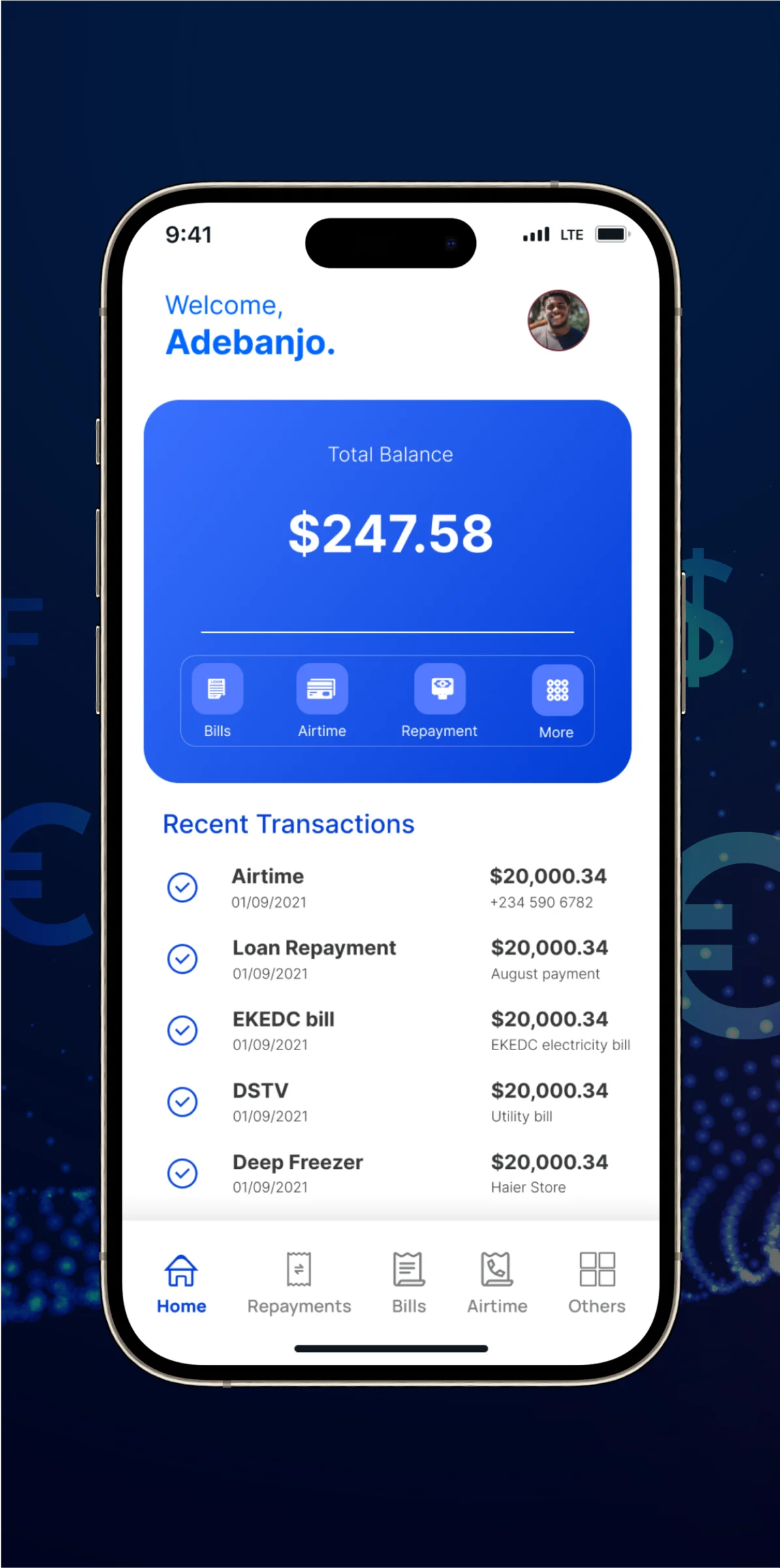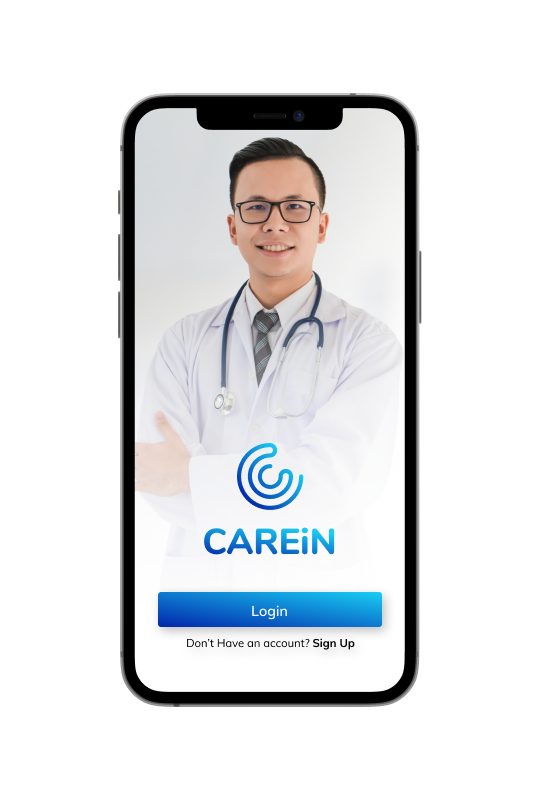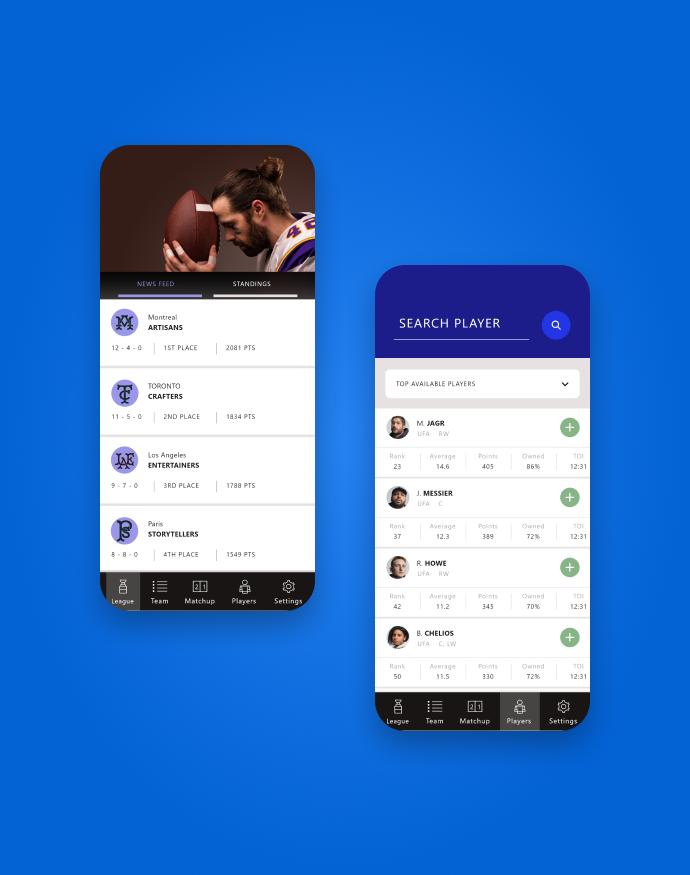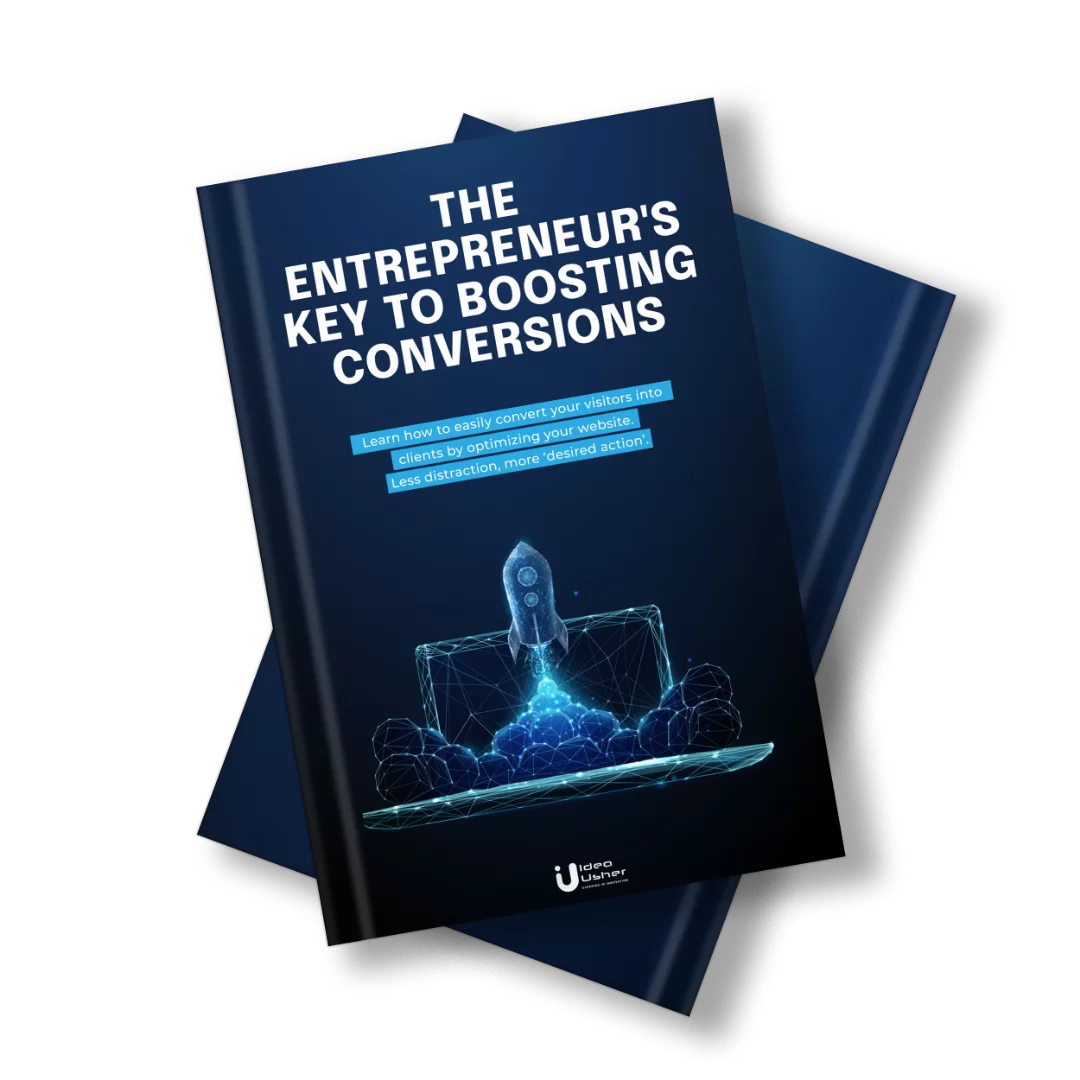- Key Market Trends of Online Pharmacy
- What is GoodRx and How Does it Work?
- Core Features of a Prescription Discount App Like GoodRx
- Steps to developing an app like GoodRx
- How Much Does It Cost to Develop an App Like GoodRx?
- How Does a Prescription Discount App Like GoodRx Make Money?
- Conclusion
- How can Idea Usher help develop an app like GoodRx?
- FAQs
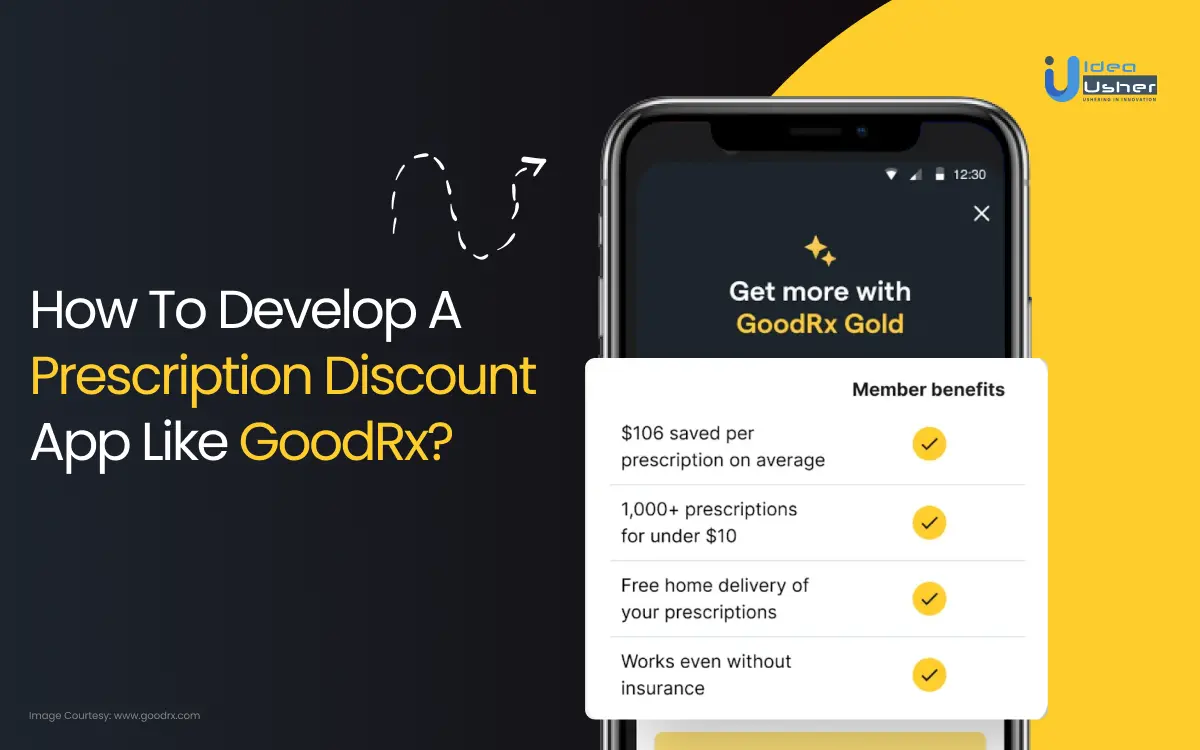
The soaring cost of prescription drugs is a major burden for many Americans. However, this widespread problem presents a major opportunity for entrepreneurs who want to make a difference. Discount apps like this have gained massive popularity because they offer real solutions. They empower people to take control of their medication costs, offering transparency and substantial savings. Their success proves that there’s a huge demand for affordable healthcare solutions. Want to develop an app like GoodRx?
In this blog, we’ll cover everything from understanding how the industry works to the must-have features of your app, the right technologies, and strategies to make your solution thrive in a competitive market.
- Key Market Trends of Online Pharmacy
- What is GoodRx and How Does it Work?
- Core Features of a Prescription Discount App Like GoodRx
- Steps to developing an app like GoodRx
- How Much Does It Cost to Develop an App Like GoodRx?
- How Does a Prescription Discount App Like GoodRx Make Money?
- Conclusion
- How can Idea Usher help develop an app like GoodRx?
- FAQs
Key Market Trends of Online Pharmacy
According to Emergen Research, the global online pharmacy market is booming, reaching a size of USD 79.10 Billion in 2022. It is projected to continue its expansion with a CAGR of 16.4%. Several factors, including a rise in urgent healthcare needs, growing consumer preference for convenient online shopping and home delivery options, and the increasing popularity of telemedicine services, fuel this surge. Furthermore, cutting-edge advancements in digital health platforms are further propelling this market’s growth trajectory.
What is GoodRx and How Does it Work?
GoodRx is a tool designed to give people power over the price of their prescriptions. It’s a lifesaver for those who might be struggling with traditional insurance—whether they lack coverage, have sky-high deductibles, or find their medications aren’t covered.
The financial success of GoodRx isn’t just about the company itself; it unveils a massive untapped market. Their ability to save users up to 80% and partner with over 70,000 pharmacies signals a deep, widespread hunger for affordable healthcare solutions.
GoodRx’s model proves that people are fed up with needlessly expensive medications. They’re ready to take control, shop around, and find the best deals. This presents a golden opportunity for innovative thinkers who want to enter this space.
How Does GoodRx Work?
Here is a basic understanding of how this platform works –
Data Aggregation
GoodRx establishes partnerships with pharmacies and Pharmacy Benefit Managers (PBMs) to gather real-time pricing data on a vast array of prescription medications. This data encompasses a wide range of pharmacies across the United States, allowing users to compare prices and find the most economical option in their area.
User-Driven Search
Users can easily search for their specific medication by name or generic equivalent. They can also enter their location (zip code or city/state) to tailor the results to pharmacies near them.
Price Comparisons and Savings
GoodRx then displays a list of nearby pharmacies that carry the medication, along with their corresponding prices. This allows users to swiftly compare prices and identify the pharmacy offering the lowest cost.
Coupon Generation
Once a user selects the most affordable option, GoodRx generates a coupon or discount code. This coupon can be printed or accessed electronically on the user’s smartphone for presentation at checkout.
Core Features of a Prescription Discount App Like GoodRx
The skyrocketing cost of prescription drugs has created a massive opportunity for businesses to empower consumers. A well-designed prescription discount app can help users unlock substantial savings while providing a lucrative model for entrepreneurs. By focusing on convenience, personalization, and cost transparency, your prescription discount app can gain a loyal user base and a strong market position. Here are the core features that drive success:
Medication Search and Price Comparison
A great prescription discount app transforms the stressful experience of searching for affordable medications. Make it as easy to find the right drug as it is to shop online for anything else. Users should be able to search beyond just drug names, looking up medications by conditions they treat, active ingredients, or even potential side effects that are a concern. Smart suggestions and autocompletion streamline the search, making it a more intuitive experience.
Prescription Coupons and Discounts
Clearly display prices across numerous pharmacies and give users control over how results are sorted: lowest price first, closest location, or even prioritizing the highest-rated pharmacies. Negotiated pharmacy discounts are a must, but explore partnerships with drug manufacturers for potential rebates or offer personalized coupons based on a user’s prescription history. Be transparent about any restrictions on discounts – expiration dates, specific pharmacy chains, etc. – to avoid frustrating users at the pharmacy counter.
Pharmacy Locator
Help users find pharmacies that fit their needs, not just ones close by. Include filters to narrow down results based on things like hours of operation, whether they offer special services like compounding or the languages spoken by staff. Take convenience a step further with direct contact information for each pharmacy and the ability to call or request refills right in the app – no more having to search for phone numbers.
Medication Information
Navigating complex medical information can feel daunting. Make your app a trusted source by partnering with a reputable medical database to provide reliable and understandable details about medications. Focus on what matters most to users: how to take it, potential side effects, and any important interactions with other drugs. This enables users to make informed decisions about their health.
User Accounts and Personalization
With a user’s consent, their data can enhance their experience. Analyze it to offer relevant discounts, suggest less expensive alternatives, and even identify potential interactions between medications they’ve previously saved in their profile.
Privacy should be a top concern. Emphasize they have full control over their data and can opt out of personalization at any time. Building trust starts with transparency.
Prescription Reminder and Refill Alerts
Staying on schedule with medication is important for many health conditions. A good discount app can be a proactive partner in health. Offer customizable reminders – simple texts, push notifications, or even integrate the app with smartwatches for even more convenience. Streamline the refill process by allowing users to request refills directly through the app, saving both time and hassle.
Secure Payment Integration
If your app will involve handling any payments, invest in top-notch security. Users need to feel confident that their financial data is protected. Research and implement the latest security protocols, regularly update your systems and stay informed about any potential vulnerabilities.
User Reviews and Ratings
User reviews are an incredibly valuable tool. Encourage users to rate pharmacies and share their experiences. Of course, you’ll want to moderate reviews to ensure they’re relevant and appropriate. Analyzing feedback carefully has multiple benefits. It helps you identify exceptional pharmacy partners and highlights potential pain points where your app or the pharmacy experience could be improved. When done right, this user-generated content helps both you and your users!
Steps to developing an app like GoodRx
Building a competitive prescription discount app inspired by the success of GoodRx requires careful planning, strategic partnerships, and meticulous execution. This comprehensive roadmap outlines the key steps to developing an app that not only helps users save money but also positions your app for success in this lucrative market.
Market Analysis & Planning
Before diving into development, conduct thorough market research to understand the impact of rising prescription drug costs on individuals and families. Identify your ideal user and analyze existing discount apps to determine where you can offer something different and better. Be mindful of healthcare regulations, especially if you plan to operate in the U.S. (HIPAA compliance is crucial).
Feature Planning
Start by defining the core essential features: powerful medication search, crystal-clear price comparisons, user-friendly coupons, and a robust pharmacy locator. To truly stand out from the competition, brainstorm unique value-adds such as detailed medication information, potential interaction warnings, or personalized discount suggestions based on user history. Consider mapping out a long-term roadmap for potential future additions like integrating telehealth options, doctor consultations, or premium paid tiers offering even more value to users.
Partnering for Savings
Your ability to offer substantial discounts hinges on strong partnerships with pharmacies and Pharmacy Benefit Managers (PBMs). Develop a clear negotiation strategy, taking inspiration from GoodRx’s success, to secure the best possible savings for your users.
Technology Stack
- User Interface: Select a suitable framework for your app’s user-facing interface. Consider React, Angular, or Vue.js to create a dynamic and engaging user experience.
- Server-Side Functionality: For reliable backend functionality, explore Node.js, Python (with Django/Flask), or Ruby on Rails.
- Data Storage: Opt for robust databases like PostgreSQL or MySQL to efficiently manage user information, medication details, and pharmacy network data.
- Scalability and Security: Ensure scalability and robust security by implementing cloud solutions like AWS, Google Cloud, or Azure.
Design for Success
Focus on intuitive navigation and clear presentation. Users should be able to find medications, compare prices, and understand coupon instructions with absolute ease. Take design cues from GoodRx, but strive for even greater usability and visual appeal. Develop a unique brand identity with a strong logo, color palette, and visual style that builds trust and recognition.
Development and Testing
Embrace a sharp development approach that allows for flexibility and continuous improvement. Seamlessly integrate APIs to pull real-time pricing information from your pharmacy partners. Prioritize rigorous testing on various devices and platforms to ensure a flawless user experience and robust security.
Security and Compliance
To earn user trust and ensure the responsible handling of sensitive health information, a prescription discount app must prioritize robust security and compliance measures. This involves implementing strong encryption to protect user data, ensuring HIPAA compliance for those serving the U.S. market, and adopting a proactive security strategy. Automated patch management plays a crucial role in proactively updating the app’s defenses against the latest vulnerabilities. These rigorous measures demonstrate a commitment to both security and compliance, fostering user confidence and long-term success.
Monetization Strategies
Explore the classic model of earning a commission based on prescription volume driven through your app. Consider targeted healthcare-related ads, which should be used judiciously to avoid disrupting the user experience. Investigate the potential of a premium tier offering even deeper discounts, exclusive features, or personalized recommendations as a valuable revenue stream.
Launch and Grow
Optimize your app’s presence in app stores with strategic keywords and a compelling description. Attract users with a mix of paid advertising, content marketing, or partnerships. Build pre-launch buzz with targeted campaigns and outreach to healthcare-related media or bloggers to maximize the impact of your launch.
Continuous Evolution
Treat your app as a continuous work in progress. Actively seek user feedback to guide improvements and new features. Expand your network of pharmacies to offer wider coverage and attract more users. Anticipate healthcare market trends and innovate to maintain a competitive edge, ensuring your app remains the go-to choice for prescription savings.
How Much Does It Cost to Develop an App Like GoodRx?
Building a competitive prescription discount app requires a careful balance of features, user-centric design, and a robust technical foundation. The cost of such a project typically falls between $150,000 and $400,000, depending on the desired functionalities and features. To navigate this complex development process effectively, partnering with a reputable app development company is key to achieving the best possible outcome. Let’s take a look at a detailed cost analysis:
| Cost Factor | Estimated Cost Range |
| Development Team | |
| Project Manager | $8,000 – $15,000 |
| UI/UX Designer | $6,000 – $12,000 |
| Frontend Dev | $10,000 – $20,000 |
| Backend Dev | $12,000 – $25,000 |
| QA Engineer | $6,000 – $12,000 |
| Data Scientist | $15,000 – $30,000 (if needed) |
| Features | |
| Search & Compare | $8,000 – $15,000 |
| Coupons/Discounts | $10,000 – $20,000 |
| Pharmacy Locator | $6,000 – $12,000 |
| Medication Info | $8,000 – $15,000 |
| User Accounts | $10,000 – $20,000 |
| Reminders | $6,000 – $12,000 |
| Payment Integration | $8,000 – $15,000 |
| Reviews/Ratings | $6,000 – $12,000 |
| Technology Stack | |
| Frontend | $10,000 – $20,000 |
| Backend | $12,000 – $25,000 |
| Database | $4,000 – $8,000 |
| APIs | $2,000 – $5,000 |
| Other Factors | |
| Design | $8,000 – $15,000 |
| Testing | $6,000 – $12,000 |
| Maintenance | 20-25% of dev cost annually |
Let’s delve deeper into how each factor impacts development costs:
Feature Complexity
Each feature you envision for your prescription discount app has associated development costs. More complex features will generally translate to a higher price tag for development. For example, providing detailed medication information requires partnering with a reputable medical database, which may involve licensing fees. Similarly, offering warnings about potential drug interactions may require consultations with medical experts to ensure accuracy. Personalization features based on user history often necessitate complex data analysis. All of these desirable features will increase development time and overall project costs.
Designing
A poorly designed app will frustrate users, even if the functionality is great. The best apps carefully balance features with a smooth, intuitive experience. This often requires multiple iterations of design and testing, which directly impacts costs. A visually appealing interface with a focus on modern design principles also requires dedicated resources during the development process.
Technology stack
Choosing your tech stack carefully impacts development time, complexity, and overall cost. Your chosen frontend framework (React Native, Flutter, etc.) impacts how quickly your app can be built and how easily it can be maintained. Backend choices (Node.js, Django, etc.) determine how efficiently your app handles data. Your database selection (MongoDB, PostgreSQL, etc.) influences scalability and potential setup costs. Integrating third-party APIs for things like real-time price data can involve subscription fees or usage-based charges.
How Does a Prescription Discount App Like GoodRx Make Money?
Apps like GoodRx utilize multiple income streams to ensure their continued ability to offer cost-saving solutions to consumers. Let’s break down how apps like GoodRx generate revenue. At the core, when a user redeems an app-provided discount coupon at a pharmacy, they initiate a financial transaction involving several parties. The pharmacy seeks to attract new customers and thus pays a fee to a Pharmacy Benefit Manager (PBM) to facilitate the discount. In turn, the PBM shares a portion of this fee with the app as compensation for driving the customer to the pharmacy. Here’s an analysis of their primary monetization strategies:
Referral Commissions
Forming the foundation of its revenue model, the app receives a commission each time a user redeems a provided discount at a pharmacy. The pharmacy gains the benefit of potential new business and pays a fee for this customer acquisition. A portion of this fee is shared with the app.
Subscription Services
Some apps offer premium tiers with a recurring subscription fee. These plans often provide expanded benefits to users, including access to the lowest possible prices, medication interaction alerts, or personalized health management tools.
Targeted Advertising
With user experience as a top priority, apps may carefully integrate healthcare-oriented advertisements. Pharmaceutical brands, medical providers, or related businesses might pay to have their products or services displayed strategically within the app, taking advantage of its dedicated user base.
Data Insights
Anonymized and aggregated user data offers valuable information to those in the healthcare industry. Insights into medication usage trends, demographics of those seeking discounts, or prescription adherence patterns can be monetized by the app while prioritizing user privacy. Pharmaceutical companies, researchers, or providers may be willing to pay for such insights.
Affiliate Partnerships
By forging relationships with online pharmacies, health-focused retailers, or telehealth platforms, the app can create additional revenue channels. The app may earn commissions for each sale or referral generated through its platform. This could involve unique offers, promotional codes, or curated discounts for app users.
Sponsored Content
Apps can partner with reputable healthcare brands, organizations, or medical experts to develop sponsored content. Articles, informational videos, or other materials aligned with the app’s focus can promote relevant products or services. This strategy, if undertaken transparently, generates income while maintaining its focus on medication affordability.
Conclusion
Developing a prescription discount app like GoodRx is a complex but potentially rewarding venture. By understanding the market, providing essential features, choosing the right technology, and implementing a sustainable revenue model, you can create an app that helps people access affordable medications while building a profitable business. However, the journey from concept to launch requires careful planning and execution. A successful app must not only offer users real value in the form of significant savings but also navigate the complexities of the healthcare industry and establish strong partnerships with pharmacies.
How can Idea Usher help develop an app like GoodRx?
At Idea Usher, we understand the complexities of building a successful prescription discount app like GoodRx. We can guide you through market analysis, feature planning, and compliance with healthcare regulations. Our team of highly qualified developers possess the expertise to design a seamless, user-friendly app and prioritize robust security to protect user data. From launch to continued growth, Idea Usher is your partner, and we stand behind our work with a 100% Developer Skill Guarantee. Let’s discuss your vision and how we can bring your prescription discount app to life. Contact us today!
FAQs
How do apps like GoodRx make money?
Prescription discount apps typically earn money through several avenues. They receive commissions when users redeem their coupons at pharmacies, offer premium subscription tiers with extra perks, and may cautiously incorporate relevant healthcare advertising. Additionally, some apps provide anonymized data insights to the healthcare industry for a fee.
How do I create a pharmacy app?
Creating a successful pharmacy app requires careful planning, development expertise, and market understanding. Start by specifying your target audience and the features you’ll offer. Partner with a reputable app development company, focus on intuitive user interface design, secure data handling, and forge partnerships with pharmacies and PBMs.
How does a pharmacy app work?
Pharmacy apps offer various features depending on their focus. At their core, they facilitate convenient interactions with pharmacies. Users might order prescription refills, manage medication schedules, compare prices at different pharmacies, or receive alerts and reminders to improve medication adherence.
How do digital prescriptions work?
Digital prescriptions eliminate the need for paper scripts. A doctor electronically creates and sends a secure prescription directly to the patient’s chosen pharmacy. The pharmacist can then access and fill the prescription through their pharmacy management system. This offers greater convenience for both patients and providers.
